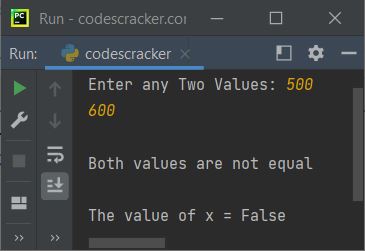- Python Basics
- Python Tutorial
- Python Applications
- Python Versions
- Python environment setup
- Python Basic Syntax
- Python end (end=)
- Python sep (sep=)
- Python Comments
- Python Identifiers
- Python Variables
- Python Operators
- Python Ternary Operator
- Python Operator Precedence
- Python Control and Decision
- Python Decision Making
- Python if elif else
- Python Loops
- Python for Loop
- Python while Loop
- Python break Statement
- Python continue Statement
- Python pass Statement
- Python break vs. continue
- Python pass vs. continue
- Python Built-in Types
- Python Data Types
- Python Lists
- Python Tuples
- Python Sets
- Python frozenset
- Python Dictionary
- List vs. Tuple vs. Dict vs. Set
- Python Numbers
- Python Strings
- Python bytes
- Python bytearray
- Python memoryview
- Python Misc Topics
- Python Functions
- Python Variable Scope
- Python Enumeration
- Python import Statement
- Python Modules
- Python operator Module
- Python os Module
- Python Date and Time
- Python Exception Handling
- Python File Handling
- Python Advanced
- Python Classes and Objects
- Python @classmethod Decorator
- Python @staticmethod Decorator
- Python Class vs. Static Method
- Python @property Decorator
- Python Keywords
- Python Keywords
- Python and
- Python or
- Python not
- Python True
- Python False
- Python None
- Python in
- Python is
- Python as
- Python with
- Python yield
- Python return
- Python del
- Python from
- Python lambda
- Python assert
- Python Built-in Functions
- Python All Built-in Functions
- Python print() Function
- Python input() Function
- Python int() Function
- Python len() Function
- Python range() Function
- Python str() Function
- Python ord() Function
- Python chr() Function
- Python read()
- Python write()
- Python open()
- Python Examples
- Python Examples
Python False keyword
The "False" keyword in Python is basically a Boolean value, the result of a comparison operation, or the result of any other logical expression whose value evaluates in the form of True or False. For example:
x = 10 y = 20 print(x==y) print(x>y)
The output is:
False False
Note: Python is a case-sensitive language. As a result, keep the first letter of the "False" keyword in capital letters and the remaining letters in small letters.
In logical expressions and conditional statements, the value "False" corresponds to the boolean value False. A variable or function name containing the word "False" is prohibited by Python's naming conventions.
In Python, there are two boolean values: True and False. In order to determine whether or not a given condition holds true, Boolean values are often combined with comparison operators (such as ==, <, >, etc.).
Python False keyword example
Here is an example of the "False" keyword in Python:
print("Enter any Two Values: ", end="") a = input() b = input() x = a==b if x: print("\nBoth values are equal") else: print("\nBoth values are not equal") print("\nThe value of x =", x)
The sample run with user input of 500 as the first number and 600 as the second number is shown in the snapshot given below:

Advantages of the "False" keyword in Python
- It can be used in conditional statements to determine whether a condition is true or false.
- It can be used as a default value for function arguments or variables that require a Boolean initialization.
- Utilizing the natural language of Boolean logic can help make code more readable and expressive.
Disadvantages of the "False" keyword in Python
- Incorrect usage, such as using = instead of == in an equality comparison, can result in errors.
- It can be confusing for novice programmers unfamiliar with Boolean logic or the Python syntax.
- It can be abused or overused, resulting in code that is unnecessarily complex or hard to comprehend.
« Previous Tutorial Next Tutorial »